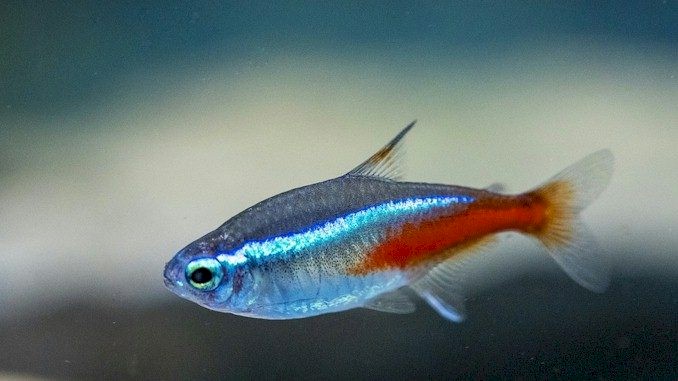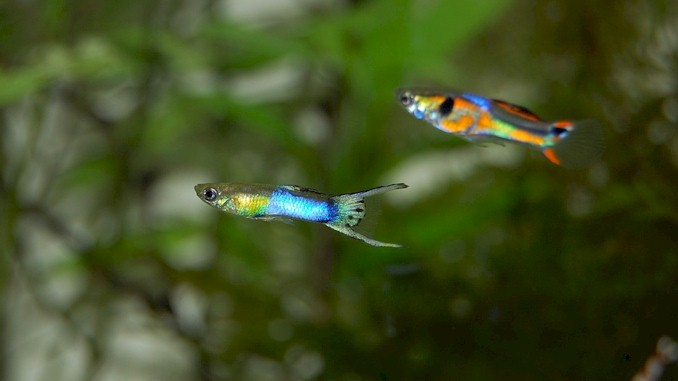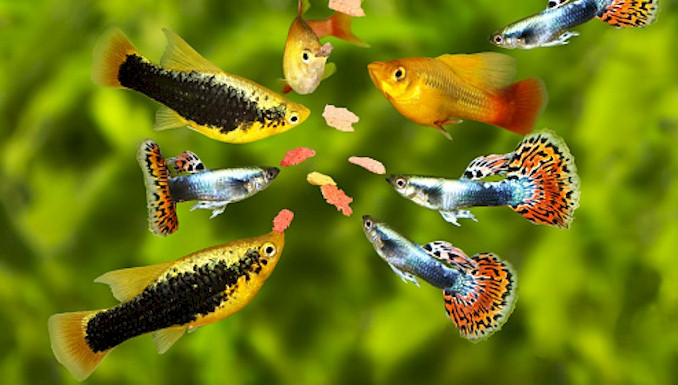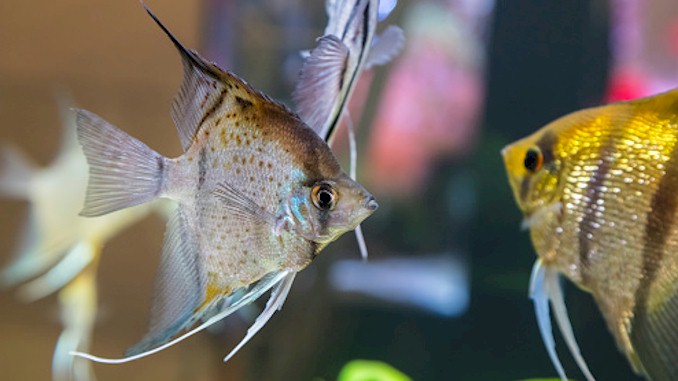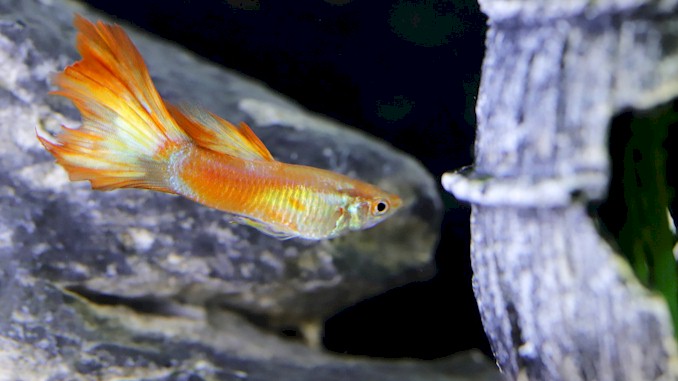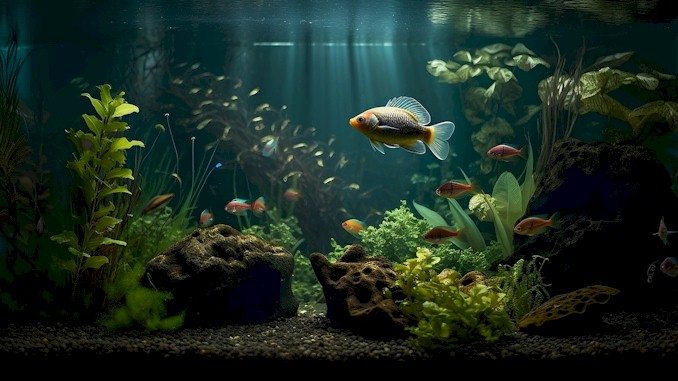Can Guppies Live With Neon Tetras – A Complete Guide
On a warm, sunny day just before Thanksgiving, I found myself itching to spice up my aquarium and bring some fresh excitement to my underwater world. I began brainstorming ways to enhance the liveliness of my tank, and that’s when the idea of adding some tank mates to the mix came to mind. At that moment, I pondered the idea of introducing neon tetras to live alongside my guppies, but I wasn’t sure whether it was a good idea. I decided to embark on a quest to find out whether guppies and neon tetras can coexist harmoniously. After extensive research on the topic, I’m excited to share my findings with you. Read on to discover the truth about guppies and neon tetras living together.
Guppies and neon tetras are both small, peaceful freshwater fish that can coexist in the same aquarium. However, it is important to note that these species have different preferences in terms of water temperature, pH levels, and feeding habits.
In addition to answering the main question of whether guppies can live with neon tetras, this complete guide will delve deeper into the nuances of their behavior, care, and compatibility. You will learn about the ideal tank setup for guppies and neon tetras, their diet and feeding habits, breeding and reproduction, and tips for maintaining a healthy and thriving aquarium. Whether you’re a beginner or an experienced hobbyist, this guide has something valuable to offer, so keep reading to discover more about these fascinating freshwater fish!
Understanding the Compatibility of Guppies and Neon Tetras
The compatibility of guppies and neon tetras is a popular topic among aquarium enthusiasts. While both of these fish species are small and peaceful, they have different needs and behaviors that need to be considered before keeping them together in the same aquarium.
Guppies are a hardy and adaptable fish species that are known for their vibrant colors and active swimming. They can tolerate a wide range of water conditions, making them a popular choice for beginner aquarists. Neon tetras, on the other hand, are more sensitive to changes in water chemistry and require a more stable environment. They are also known for their iridescent colors and striking blue and red stripes, which make them a popular choice for adding a splash of color to any aquarium.
To determine the compatibility of guppies and neon tetras, it is important to consider factors such as their size, behavior, and tank requirements. Guppies are small fish that typically grow to around 2 inches in length, while neon tetras can grow up to 1.5 inches in length. While they are similar in size, neon tetras tend to be more delicate and require a more stable environment than guppies.
In terms of behavior, guppies are active and social fish that are known for their playful and curious nature. They are also known to be prolific breeders and can quickly overpopulate an aquarium if not kept in check. Neon tetras, on the other hand, are more peaceful and tend to form schools or shoals with other tetras. They are also known to be sensitive to changes in water chemistry and can become stressed if the conditions in the aquarium are not optimal.
Overall, while guppies and neon tetras can be kept together in the same aquarium, it is important to consider their individual needs and behaviors before introducing them. It is also important to ensure that the aquarium is properly set up and maintained to provide a healthy and stable environment for both fish species. In the following sections, we will explore the ideal tank setup, feeding habits, and other important considerations for keeping guppies and neon tetras together in the same aquarium.
Creating the Ideal Tank Setup for Guppies and Neon Tetras
When setting up an aquarium for guppies and neon tetras, it is important to provide a suitable environment that meets the needs of both fish species. Here are some key factors to consider when creating the ideal tank setup for guppies and neon tetras:
Tank Size: The minimum recommended tank size for a community aquarium that includes both guppies and neon tetras is 20 gallons. This will provide enough space for the fish to swim and play, as well as provide adequate filtration and water quality control.
Water Temperature and pH: Guppies prefer water temperatures between 72-82°F, while neon tetras prefer temperatures between 70-78°F. It is important to maintain a stable water temperature and pH level between 6.5-7.5, as fluctuations can stress the fish and lead to health problems.
Filtration and Aeration: Proper filtration and aeration are essential for maintaining a healthy aquarium environment. A good rule of thumb is to have a filtration system that can process at least 5 times the volume of water in the tank per hour. Aeration can also be provided through the use of air stones or other devices to increase oxygen levels in the water.
Aquascape: Creating an appealing and functional aquascape is important for the health and happiness of the fish. Providing plenty of hiding places, such as plants, rocks, and driftwood, will help reduce stress and aggression. It is also important to leave open swimming spaces for the fish to play and explore.
Compatibility: When selecting tankmates for guppies and neon tetras, it is important to choose fish that are compatible in terms of size, temperament, and water requirements. Other compatible fish species include corydoras catfish, dwarf gouramis, and cherry barbs.
Feeding: Guppies and neon tetras have different feeding habits and nutritional needs. Guppies are omnivores and will eat a variety of foods, including flakes, pellets, and live or frozen foods. Neon tetras, on the other hand, are primarily carnivorous and require a diet that includes live or frozen foods, such as brine shrimp or bloodworms. It is important to provide a balanced and varied diet for both fish species.
By following these guidelines, you can create an ideal tank setup for guppies and neon tetras that provides a healthy and thriving environment for both fish species. In the next section, we will discuss feeding habits and nutritional needs in more detail.
Feeding Habits and Nutritional Needs of Guppies and Neon Tetras
Guppies and neon tetras have different feeding habits and nutritional needs, and it is important to provide them with a balanced and varied diet to maintain their health and vitality.
Guppies are omnivores and will eat a variety of foods, including flakes, pellets, and live or frozen foods. It is important to provide a high-quality commercial food that contains essential vitamins and minerals, as well as supplement their diet with live or frozen foods such as brine shrimp, daphnia, and bloodworms. These live or frozen foods provide additional nutrients that are not found in commercial foods, which can help maintain their overall health and coloration.
Neon tetras, on the other hand, are primarily carnivorous and require a diet that includes live or frozen foods, such as brine shrimp or bloodworms. While they may also eat flakes or pellets, these should not make up the majority of their diet. It is important to provide a varied diet that includes a mixture of protein-rich live or frozen foods and high-quality commercial foods that contain essential vitamins and minerals.
Overfeeding can lead to health problems and poor water quality, so it is important to feed both guppies and neon tetras in moderation. A good rule of thumb is to feed small amounts twice a day, only what they can consume within a few minutes.
It is also important to note that water temperature can affect the metabolism of fish and their feeding habits. When water temperatures are cooler, fish tend to eat less, while warmer water temperatures can increase their appetite. Therefore, it is important to adjust feeding amounts accordingly based on the temperature of the water.
In summary, providing a balanced and varied diet that meets the nutritional needs of both guppies and neon tetras is crucial for their overall health and well-being. By following these guidelines and adjusting feeding amounts based on water temperature, you can help ensure that your fish are happy, healthy, and thriving in their aquarium.
Breeding and Reproduction of Guppies and Neon Tetras
Breeding guppies and neon tetras can be an exciting and rewarding experience for aquarium hobbyists. Both species are known for their prolific breeding habits and can produce large numbers of fry if the conditions are right.
Guppies are livebearers, meaning they give birth to live young rather than laying eggs. Male guppies are known for their colorful and flamboyant fins and will often display to females to attract their attention. Once a male has successfully courted a female, she will carry the developing fry in her body for about a month before giving birth to a brood of up to 50 or more fry.
To encourage breeding in guppies, it is important to provide them with a well-maintained aquarium that has plenty of hiding places and live plants. The water should be kept at a stable temperature between 72-82°F and have a pH of around 7.0-8.0. A diet that includes live or frozen foods can also help stimulate breeding behavior in guppies.
Neon tetras, on the other hand, are egg-layers and will deposit their eggs on a substrate or on the leaves of plants. The eggs will hatch in approximately 24-36 hours, and the fry will become free-swimming after a few days. To encourage breeding in neon tetras, it is important to provide them with a well-planted aquarium that has a gentle water flow and is kept at a stable temperature between 72-82°F with a pH of around 6.0-7.5. A diet that includes live or frozen foods can also help stimulate breeding behavior in neon tetras.
It is important to note that both guppies and neon tetras can be prolific breeders, and if not managed properly, can quickly overcrowd an aquarium. To prevent overpopulation, it is recommended to separate breeding pairs into a separate breeding tank or to regularly remove excess fry from the main aquarium.
In summary, breeding guppies and neon tetras can be a fun and rewarding experience for aquarium hobbyists. By providing them with the proper conditions and diet, you can encourage breeding behavior and produce healthy offspring. However, it is important to manage their breeding habits to prevent overpopulation in the aquarium.
You can check out my article on how to care for guppy fry by clicking this link.
Tips for Maintaining a Healthy and Thriving Aquarium with Guppies and Neon Tetras
Maintaining a healthy and thriving aquarium is crucial for the well-being of your guppies and neon tetras. Here are some tips to help you keep your aquarium in top condition:
- Regular Water Changes: It is important to perform regular water changes to remove any excess nutrients and waste products from the aquarium. For guppies and neon tetras, a water change of 20-30% every two weeks is recommended.
- Monitor Water Parameters: Regularly test the water parameters in your aquarium to ensure that the pH, ammonia, nitrite, and nitrate levels are within acceptable ranges. A pH of 7.0-8.0 and ammonia and nitrite levels at 0 ppm is recommended for both guppies and neon tetras.
- Provide Proper Lighting: Guppies and neon tetras prefer moderate lighting conditions. Avoid placing your aquarium in direct sunlight, as this can cause algae growth and temperature fluctuations.
- Keep the Aquarium Clean: Regularly clean the aquarium by removing any uneaten food, dead plant matter, and waste products. This will help prevent the buildup of harmful bacteria and maintain water quality.
- Avoid Overfeeding: Overfeeding can lead to excess nutrients in the aquarium, which can cause water quality issues and health problems for your fish. Feed your guppies and neon tetras a small amount of food 2-3 times per day, and remove any uneaten food after a few minutes.
- Provide Adequate Filtration: Proper filtration is essential for maintaining a healthy aquarium. For guppies and neon tetras, a hang-on-back filter or sponge filter is sufficient to provide adequate filtration.
By following these tips, you can ensure that your aquarium remains healthy and provides a thriving environment for your guppies and neon tetras. Remember to monitor your aquarium regularly and make adjustments as needed to maintain optimal water quality and conditions.
If you aren’t sure about keeping guppies and neon tetras, you can click this link to find out what the best tank mates for guppies are.

